Hey everyone! I have some
great news to share about Jurassic World
and Dolphin Tale 2. So before Palm Sunday gets here (yes,
it's that time of year again! Hooray!), let's dive right into it before we go into the third and final part of my series, The Dinosaur Renaissance.
Days Till
It is:
3 days till Palm Sunday! Happy Palm Sunday everyone in advance!
It is:
8 days till the Friday night performance of “The King on a Cross”
It is:
10 days till Easter Sunday
In the Spotlight
Normally,
I'd start off this section of the blog post with some Jurassic
World news, but I'll do things a
little differently today by starting with another great upcoming
film: Dolphin Tale 2!
Loads of information has been revealed concerning this movie, right
down to some key plot points.
For those of you who haven't seen the first film (inspired by a true
story), it's a film about a dolphin found with its tail caught in a
crab trap. An 11-year old boy named Sawyer Nelson (portrayed by
Nathan Gambles), one of my favorite characters in the film, “finds”
the dolphin on washed up on the beach (technically, a local fisherman
found it, but that's another story) and workers from the local
Clearwater Marine Aquarium (at the time called the Clearwater Marine
Hospital) headed by Dr. Clay Hasket (portrayed by Harry Connick Jr.)
rescues the dolphin and brings it back to their facility.
Unfortunately, the dolphin – whom the Dr. Clay's daughter (another
one of my favorite characters), Hazel Hasket (portrayed by one of my
favorite actresses, Cozi Zuehlsdorff) named Winter (another one of my
favorite characters in the film) – suffers from a nasty infection
on her tail which has to be removed. The movie portrays how Winter
struggled to overcome the obstacle of losing her tail needed for
swimming by using a prosthetic tail that Sawyer thought up.
According
to USA Today, the Dolphin Tale 2
movie is again about Winter. This time, her foster mother, Panama,
dies (she really died in reality) and Dr. Clay is forced to try and
find a new friend for Winter. All the original main cast is coming
back in this sequel and we'll also see a new dolphin named Hope. Like
Winter, Hope is also a real dolphin who lives at the CMA in reality.
Several images from the film were released this week. Personally, I
think they're totally awesome! Here they are below:
 |
| Ashley Judd and Morgan Freeman from DT2. |
 |
| Cozi Zuehlsdorff, Harry Connick Jr. and Morgan Freeman. |
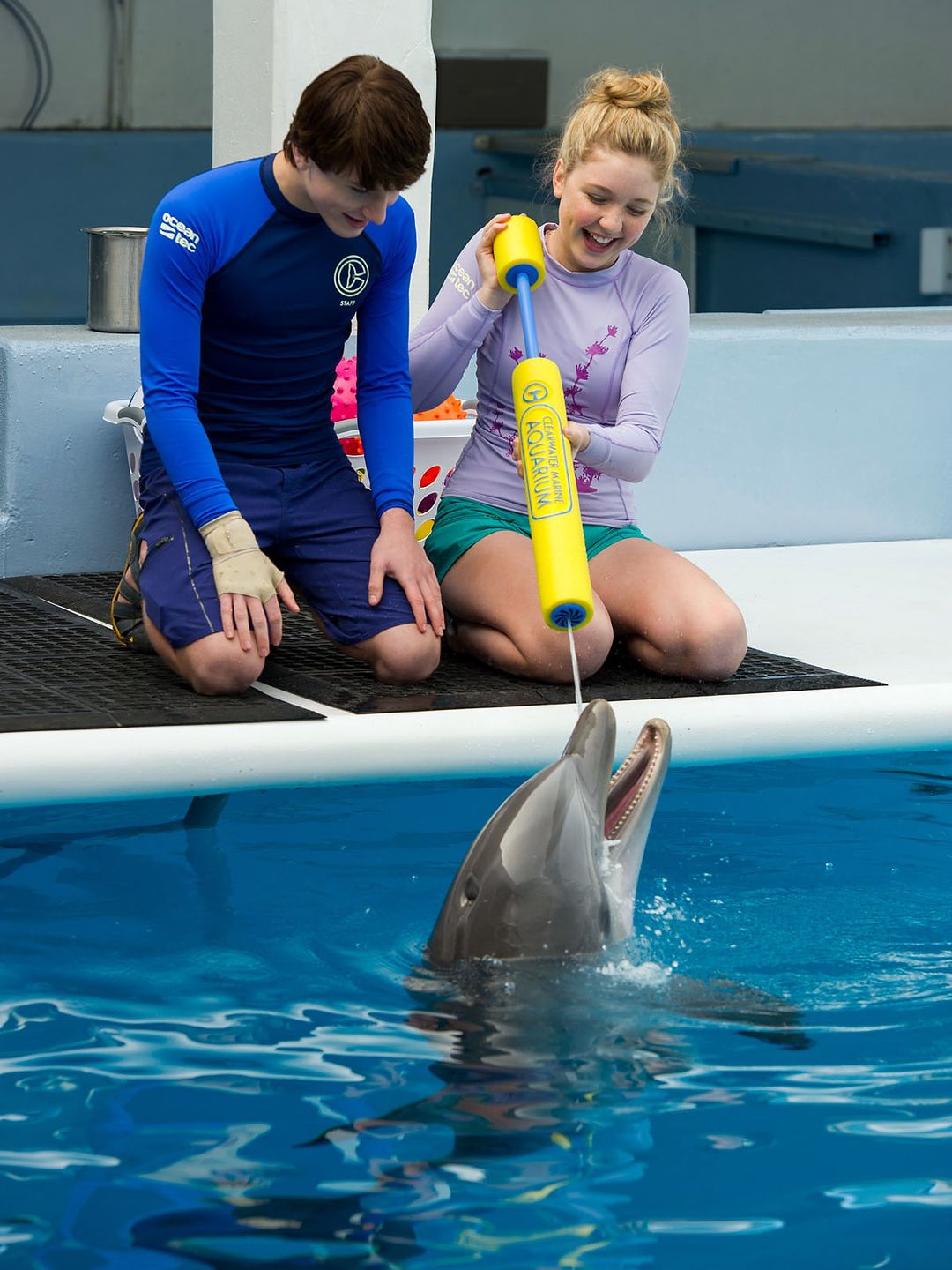 |
| Nathan Gamble and Cozi Zuehlsdorff. |
 |
| Nathan Gamble, Cozi Zuehlsdorff and a dolphin (possibly Winter?). |
So
what's the other big news bit about DT2?
Well, the first trailer for the film is coming out tomorrow in
theaters! It's going to be shown with the movie Rio 2,
which can be seen below behind Cozi Zuehlsdorff in this photo she
posted onto her twitter account:
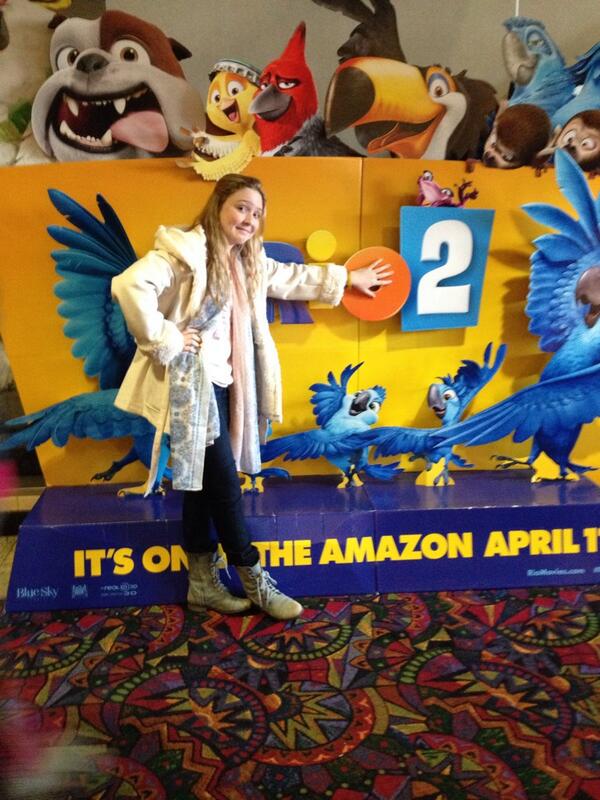 |
| The first trailer of Dolphin Tale 2 -- with a cast including Cozi Zuehlsdorff seen in the photo above -- will be appearing alongside Rio 2 starting tomorrow! |
Dolphin
Tale 2 comes out on September 19, 2014! I'm practically leaping up and down in excitement . . .
literally!
Anyway,
a bus-load of news concerning Jurassic World
(formally known as Jurassic Park 4),
which is coming out on June 12, 2015. Last week, it was announced by
the film's director, Colin Trevorrow, that three as-of-yet
unannounced female actresses will be in the film. This week, the
names of the three actresses were revealed: Judy Greer, Katie McGrath, Lauren Lapkus!
 |
| Judy Greer will be portraying Bryce Dallas Howard's character's sister in Jurassic World! |
 |
| Katie McGrath is going to be in Jurassic World! |
Also,
a fan recently asked Judy Greer if she would be portraying Bryce Dallas
Howard's character's (who's name is believed to be Beth) sister, due
to their similar appearance. Greer confirmed that she would be.
Given this fact, many fans believe that since the two young stars in
JW, Nick Robinson and Ty Simpkins are
playing the nephews of Bryce Dallas Howard's character, that Greer is
going to be playing Robinson and Simpkin's characters' mother.
Yet,
after all that exciting news, I'm still
not done. Here it is guys, probably the most thrilling Jurassic
World news ever heard since it
was revealed that the movie was being made is, drum-roll please . . .
*drum-roll*: Universal Pictures
is going to start filming TOMORROW in
their Hawaii location!!! I'm really excited about this! Finally,
after 12 long years, Jurassic World
is leaving the pre-production stage and moving onto the actual
production stage of development! We Jurassic Park
fans should remember this grand moment. Finally, this movie will get
to see the light and we'll see packs
of Velociraptors,
Tyrannosaurus and the
new scary dinosaur we've been teased about roaming around Patel
Corporation's new theme park! Get your seat-belts on, because with
the movie entering the filming stage of development, we should be
getting a lot of news coming in . . . a lot
of news!
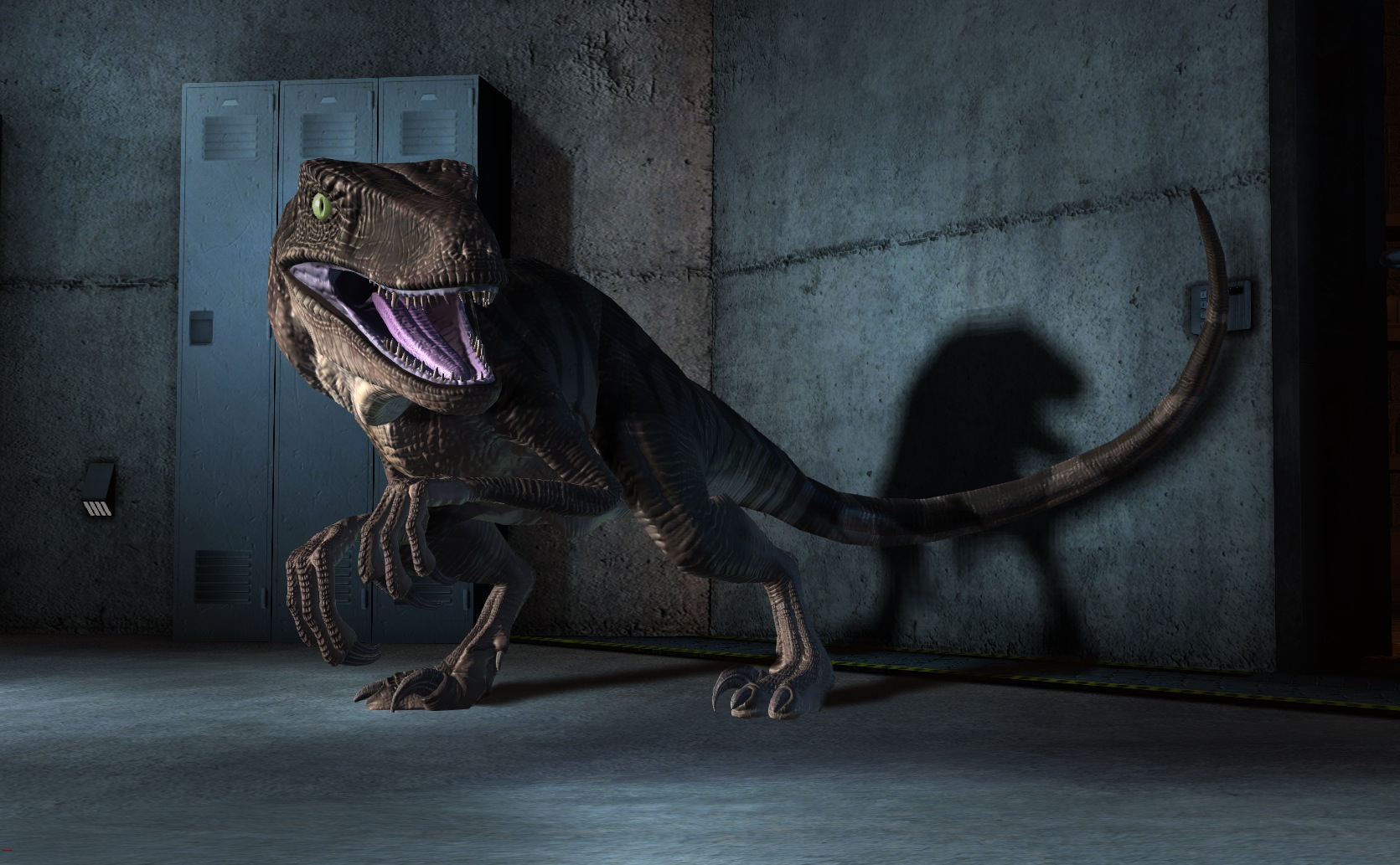 |
| Velociraptors will prowl Jurassic World on June 12, 2015! |
Topic of the Week by Christian Ryan
Part 1 of my series, “The Dinosaur Renaissance”, focused on the
early beginnings of our view of dinosaurs. These discoveries helped
us to see that there were once creatures God created that aren't
still with us today. In fact, there were entire ecosystems
that don't exist today! And in part 2, we looked at the ever evolving
view of dinosaurs as our knowledge continued to grow (so there's no confusion: our views of dinosaurs evolved, not the dinosaurs themselves). The final part
of this series will look at the most recent change in our
understanding of dinosaurs and how it's still ever-changing to this
day!
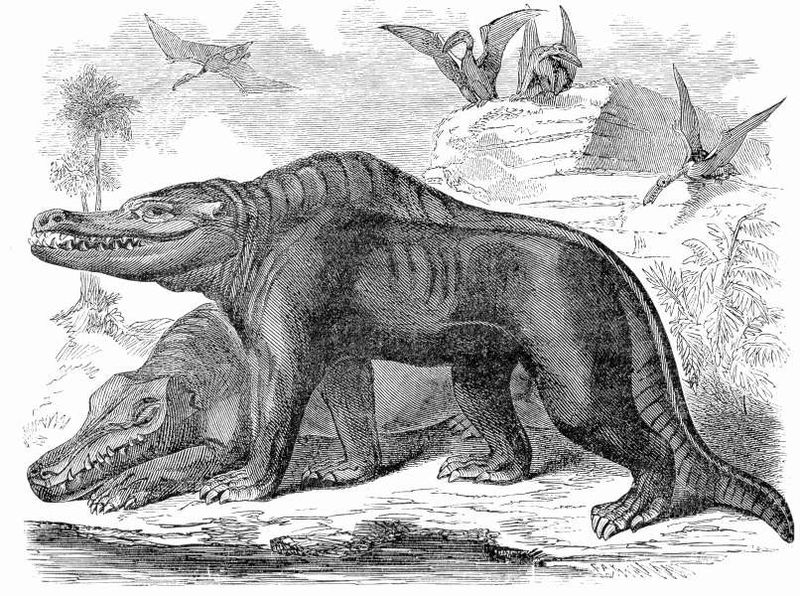 |
| Dinosaurs have changed a lot over the years, as one can see by looking at this Victorian-age depiction of Megalosaurus. |
 |
| This is how Megalosaurus looked in real life. |
By the early 1900's, dinosaurs were becoming more and more famous and
made numerous appearances in books and movies. The famous author
Conan Doyle, popular for creating Sherlock Holmes, published what is probably the first book featuring dinosaurs as a major part of the story. He called his book The
Lost World, and published it in 1912; the book also inspired a movie by the same name which was released in 1925. By
this time, audience loved the monsters dinosaurs were portrayed as.
These creatures were nothing like the dinosaurs we know in the 21st
century! Here's what was written concerning the descriptions of the
dinosaur known as Iguanodon at the time from The Lost World
novel and you'll see what I mean:
“There were, I say, five of them, two being adults and three young ones. In size they were enormous. Even the babies were as big as elephants, while the two large ones were far beyond all creatures I have ever seen. They had slate-colored skin, which was scaled like a lizard's . . . All five were sitting up, balancing themselves upon their broad, powerful tails and their huge three-toed hind-feet, while with their small five-fingered front-feet they pulled down the branches upon which they browsed . . . they looked like monstrous kangaroos, twenty feet in length . . .”
.jpg/509px-Page_187_(The_Lost_World,_1912).jpg) |
| This is a picture from The Lost World novel; a herd of inaccurate Iguanodon are feeding. Near the bottom left side of the picture, some explorers can be seen. |
And here is a description of
the carnivorous theropod Allosaurus
from the same novel:
“Suddenly from the near belt of trees there broke forth a group of twelve or fifteen Indians, running for their lives, and at their very heels two of those frightful monsters which had disturbed our camp and pursued me upon my solitary journey. In shape they were like horrible toads, and moved in a succession of springs, but in size they were of incredible bulk, larger than the largest elephant . . . indeed they are nocturnal animals save when disturbed in their lairs, as these had been . . . their blotched and warty skins were of curious fish-like iridescence . . . Their slow reptilian natures cared nothing for wounds, and the springs of their lives, with no special brain center . . . could not be tapped by any modern weapons.”
Of course, these two
excerpts from The Lost World would be looked upon with scorn
by scientists and the general public, as these two
descriptions of dinosaurs are incredibly inaccurate. But they perfectly portray
how dinosaurs were believed to look like and behave at the time. When
would the view of slow, dimwitted, cold-blooded monsters change?
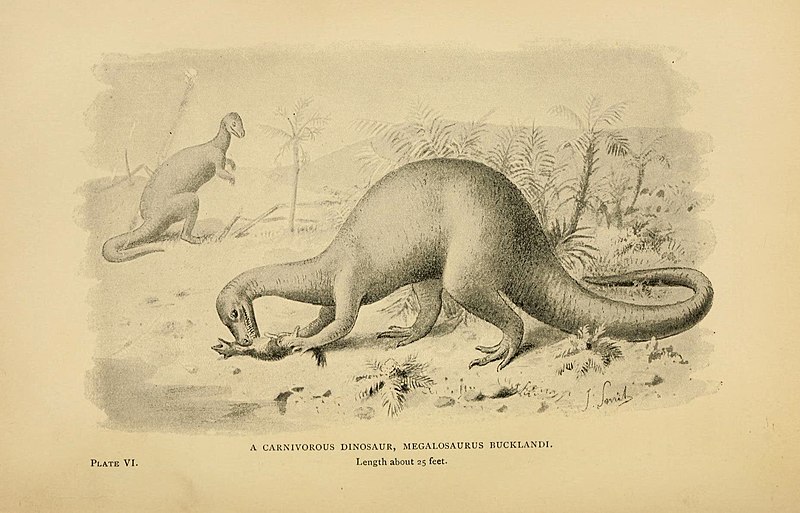 |
| Dinosaurs used to be portrayed as slow and dumb reptiles that dragged their tails along the ground. |
Well, as we've learned in
Part 2, most two-legged dinosaurs were portrayed basically the same
way – standing completely upright in a tripod posture, using the
tail, which dragged along the ground behind the animal, as a prop. But
this was all to change back when the 1960's came around; paleontologist John
Ostrom made the alarming discovery of an all-new species. Meet Deinonychus!
 |
| Deinonychus was unlike scientists' ideas of dinosaur; it was a fast, agile and relatively intelligent carnivore. |
Now known to be a member of the raptor, or dromaeosaur family, this
dinosaur was completely different from the way we thought dinosaurs
looked like. Instead of the big, lazy and cumbersome dinosaurs of
earlier times, Deinonychus
was lethal and agile that grew 11 feet long and stood about three-five feet
tall, depending on its stance at any given time. It had an ferocious set of jaws filled with sharp teeth,
grasping and clawed forearms, a long stiff tail for balance while
running and, it's most deadly weapons, a sickle-shaped, retractable
six-inch claw on the second toe of each foot. These claws are
thought to be used to finish off its prey. Perhaps one of the most
interesting things to note about this dinosaur, was that it could
run, fast! Paleontologists believe it ran in excess of 30-40mph! In order to be able to be an efficient predator, Deinonychus
couldn't be sluggish and lazy. Later tests would prove that it wasn't
a dimwit either! There was no way around a new fact: Deinonychus
wasn't what everyone thought a dinosaur was at the time and the view
people had of dinosaurs had to be changed. The Dinosaur Renaissance
had officially begun!
There
were some other things about Deinonychus
that scientists such as John Ostrom noticed: he didn't discover one
Deinonychus, but four
of them AND an herbivore called Tenontosaurus.
The herbivore had bite marks on its bones and scattered around its body. Maybe some theropods weren't
solitary hunters, but instead hunted in packs like modern wolves or
lions? This was definitely a possibility! Deinonychus was
also an unusually smart dinosaur – perhaps owning the intelligence
of a modern eagle or wolf – and this got scientists thinking that
maybe their ideas about other dinosaur species were wrong as well.
Paleontologist
Robert Bakker was one of the most influential scientists in the
Dinosaur Renaissance movement. He argues that fossils prove that
dinosaurs were much more agile, active and intelligent than we
initially gave them credit for (and today this is known to be true).
But before we go into the topic of our new perception about dinosaur
behaviors and physiology, let's discuss how their very appearance changed!
After looking at the skeletons of many dinosaurs, scientists found
out that many of their reconstructions – the ones that
portrayed bipedal dinosaurs standing in a tripod posture – were wrong! Why? Well, the
reasons were obvious: by reconstructing dinosaurs in these positions, they
had to break the dinosaur's back, neck and tail! They also began
taking a closer look at the muscle scars on dinosaur fossils.
Muscle scars were used to determine how and where the tendons once were attached to the bones. It turned out that the muscles and tendons would not have
allowed for the tripod posture for dinosaurs – instead, scientists
learned that theropods such as T. rex and Allosaurus,
actually walked with their heads, necks, backs and tails held
horizontally to the ground. The hadrosaurs and iguanodonts, it turned
out, were primarily quadrupeds, meaning they walked on four legs.
They only used their two back legs alone when running. There's also
another major problem with the tail-dragging idea – few, if any,
dinosaur tracks have been found with evidence of tail drag marks,
like the ones you find in the trackways of living reptiles, such as
crocodiles and lizards (not to mention the fact that the muscles and
tendons in their tail would not have allowed the tail to be dragged
in any species of dinosaur). Dinosaurs never dragged their tails.
Instead, scientists now believe that dinosaurs were more like birds
and mammals in many ways, rather than reptiles. This however is not
because they're related to birds (as evolutionists would have you
believe), but because both birds and dinosaurs have the same
Designer! During the 1970's, thanks to the work of scientists like
Bakker, restorations of dinosaurs portrayed the creatures more like the ones
we see in movies such as Jurassic Park.
This isn't where the Dinosaur Renaissance stops though.
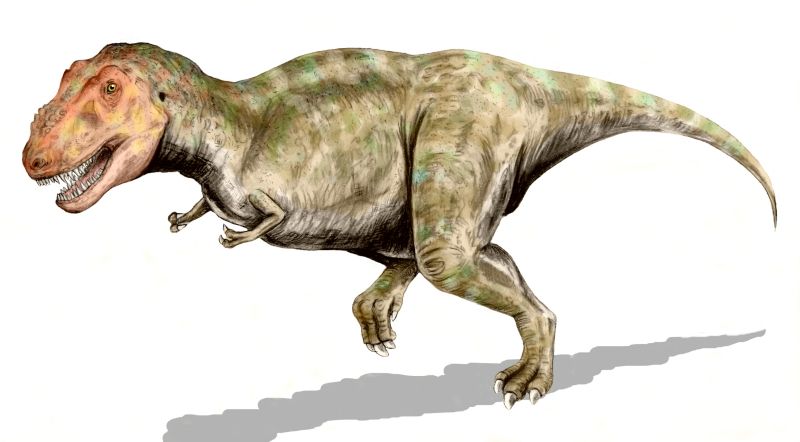 |
| Contrary to initial depictions, dinosaurs like Tyrannosaurus rex walked with their backs parallel to the ground. |
Even our
ideas about dinosaur physiology changed. We used to believe that
dinosaurs were cold-blooded brutes that had to bask in the sun like
modern reptiles to keep themselves energized (this is why modern
reptiles are sluggish on chilly days). But in recent decades,
scientists have been able to study dinosaur growth patterns and their
possible behavior in finer detail than before thanks to new
technology (e.g. CAT scan machines are used to see inside dinosaur
bones). Beginning in the 1960's, Bakker suggested that dinosaurs were
capable of sustained rates of high activity, which is very unlike
modern reptiles. By looking at dinosaur growth patterns, we can see
that many species of dinosaurs reached adulthood quickly (the
sauropods could reach sexual maturity within a few decades!). The
rates in which dinosaurs grew in unheard of in modern reptiles. This
suggests that instead of being cold-blooded, dinosaurs were
warm-blooded.
Another piece of evidence that dinosaurs were
warm-blooded comes from studies that took place in 2013. The study
concluded that based on what we know about dinosaur behavior, they
couldn't have been cold-blooded because a cold-blooded metabolism
wouldn't have allowed for the types of dinosaur behavior we know about from fossils! For
instance, many dinosaurs could run at fast speeds that would have
left modern reptiles (quite literally) in the dust. Dinosaurs also
stood with their legs relatively straight underneath their body
(unlike some older reconstructions which portray them splaying out
like a lizard's). Only warm-blooded animals today stand and walk with
their legs relatively underneath their body, so there really isn't
much of a reason for dinosaurs to have been any different. The
evidence points to warm-blooded dinosaurs!
 |
| Did you know that T. rex had a teenage growth spurt, just like we do? |
Even
since the 1960's, our knowledge of dinosaur behavior has changed
dramatically! As mentioned before, new evidence suggests that their
behaviors were more akin to birds and mammals than to lizards and
crocodiles. Many times, many of the same species of dinosaurs from
various kinds of dinosaurs including hadrosaurs, ceratopsians,
ornithomimids, ornithopods (e.g. Iguanodon)
have been found in the same place and all died at the same time.
Sometimes, hundreds of
the same species of dinosaurs all died at the same time and place –
this means that these animals were probably herding creatures, just like many
modern mammals. Another thing that's worth noting is that many of
these dinosaurs that lived in herds have elaborate head structures,
for instance: ceratopsians, like Triceratops,
are famous for their horns and frills and hadrosaurs, such as Parasaurolophus
has large crests, just to name a few
examples. Paleontologists now believe that these dinosaurs were not
only herd animals, but they also might have had hierarchy within the
herd. The brilliant spikes of the leader of a herd ceratopsian
Styracosaurus could
send a message to other members of the herd, as if to say, “I'm a
strong and healthy individual! It would be a waste of time for you to
fight me for dominance.” This is similar behavior to what we see in
bison, deer and other mammals with crazy headgear. These vast herds
of dinosaurs, some of which hundreds of members strong, were escaping
from the destruction of Noah's Flood when the flood waters overcame
them and buried them quickly, leaving them to fossilize.
Theropods –
the group consisting mostly of carnivorous dinosaurs – might have also lived in groups. Remember the Deinonychus
we mentioned earlier that were found together? In Utah, over 60
specimens of Allosaurus
have been found in one location. This probably doesn't represent one
pack, but perhaps as the waters of Noah's Flood rose higher, multiple
packs of Allosaurus
were driven together before they were eventually overcome with water.
Trackways in Asia reveal that a few dromaeosaurs related to
Deinonychus were
probably walking together as a pack. We even have evidence for
pack-hunting in tyrannosaurs. In Canada, the fossils of a few
Daspletosaurus (a
close relative of T. rex) were found next to the fossils of a
hadrosaur; maybe these dinosaurs worked together to bring down the
hadrosaur for lunch! Some Tyrannosaurus
rex fossils have also
been discovered in close proximity to each other. So as you can see,
there's tremendous evidence for herding and packing behaviors in many
species of dinosaurs.
Sauropods and stegosaurs seemed to have lived
in herds; trackways have been discovered that portray multiple
members of the same species moving together (if you ask me, it's
extremely unlikely that these were just solitary animals following
each other's footsteps!). Bakker even has a theory about how
sauropods moved in their herds: he believes that, based on the
footprints, many sauropods traveled with the younger members of the
herd in the middle, with the adults forming a protective ring around
them.
 |
| The mighty Styracosaurus probably lived in herds. |
 |
| Carnivores such as Daspletosaurus might have hunted in packs. |
Did
you know that study of dinosaur behaviors goes deeper than just mere
herding and packing? Before the Dinosaur Renaissance, it was believed
that dinosaurs laid their eggs (sometimes as many as a hundred,
depending on the species) and moved on, leaving the youngsters to
fend for themselves. In the late 1970's, another paleontologist
important to the Dinosaur Renaissance, Jack Horner, and his team
discovered a nesting colony of a new species of hadrosaur. The nests
they found were filled with adults and both young and eggs (some of
which containing embryos of the unhatched young). Based on the
fossils, scientists learned that the hatchlings were weak upon
hatching, and they couldn't have foraged by themselves, so at least
one individual – presumably the mother – must have fed and
protected them. Horner named the dinosaur Maiasaura,
appropriately meaning “good mother lizard”.
Also, a discovery in
Mongolia hailed another dinosaur parent: Oviraptor.
Many different specimens of this dinosaur have been found actually
sitting on their
nests, just like modern birds do when they're incubating them! Troodontids, small dinosaur similar to the dromaeosaurs, have been
found sitting on their nests as well. In 2013, nests of a not-too-well
understood dinosaur, a therizinosaur, were discovered in
Asia. Dinosaur nests, including the ones from the therizinosaurs, are
often found in a circular pattern (similar to the way modern birds
lay their eggs); this suggests that other theropods cared for the
young as well. We don't have any direct evidence (yet) for parental care in tyrannosaurs, they might have cared for their young too, just like
modern crocodilians and birds do.
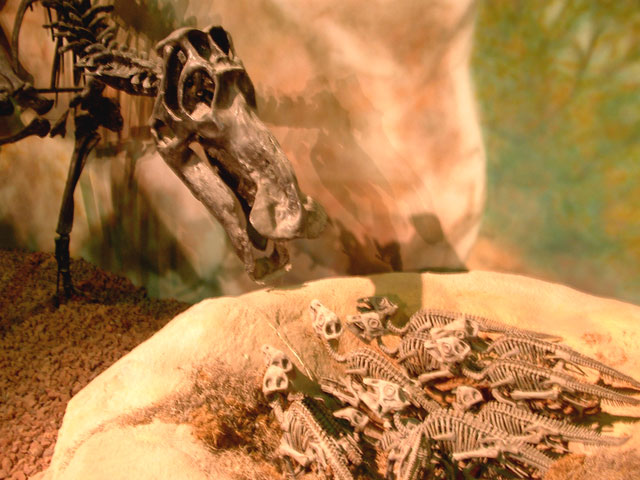 |
| Maiasaura probably cared for its eggs and young until they were old enough to fend for themselves. |
But
despite these new discoveries, dinosaurs were still viewed in the
exact same way by the general public . . . at least until the movie
Jurassic Park, roared
into theaters in 1993! This was when the general public finally
caught up. Jurassic Park
was the very first dinosaur movie to not only portray dinosaurs that
looked real, but also overall reflects how they most likely behaved.
In the movie, they portray dinosaurs moving about in herds, actively
moving about and catching prey (mostly humans), and in sequels, they
even portray the dinosaurs investing in parental care. Into the
21st
century, dinosaurs are still popular in the public eye and are the
main focus in movies, books, museums, games, TV shows, and even toy
shops. They're practically everywhere!
The Dinosaur Renaissance has rapidly changed our view of these
amazing animals that once used to walk the earth. Yet, there's still
a lot of things that we don't know and are only just learning (for
instance, it was only discovered late last year that Edmontosaurus
regilis, had a fleshy head crest). In fact, the Dinosaur
Renaissance is far from over . . . it's really only just beginning!
As we continue to learn more and more about these reptiles, one thing remains clear: these animals were not
poorly evolved brutes and monsters destined for extinction as
evolutionary failures as initially depicted; instead, these were
animals that really existed and were regally designed by an
intelligent Creator – God – that beautifully showcase His mighty
handiwork!
PS 1: To post a comment
(this is highly encouraged), please simply click the post you wish to
comment on, scroll to the bottom of the page and put what you wish to
say or ask in the comment box. Then in the box below the comment box
choose who you’re going to comment as. And then click preview
or publish. If you aren’t signed into Google, you’ll be
asked to type in a word and a number in the space provided. Type the
word, put a space and then put the number. Then your comment is on
the blog!
PS 2: Have a puzzling question about
animals (including dinosaurs), myself, my latest book, my stop-motion
movies, Creation or etc? Please post your question as a comment or
send me an email at animaladventures@aol.com.
PS 3: What’s the new in the news?
Check it out at SMILEY’S
NEWS.

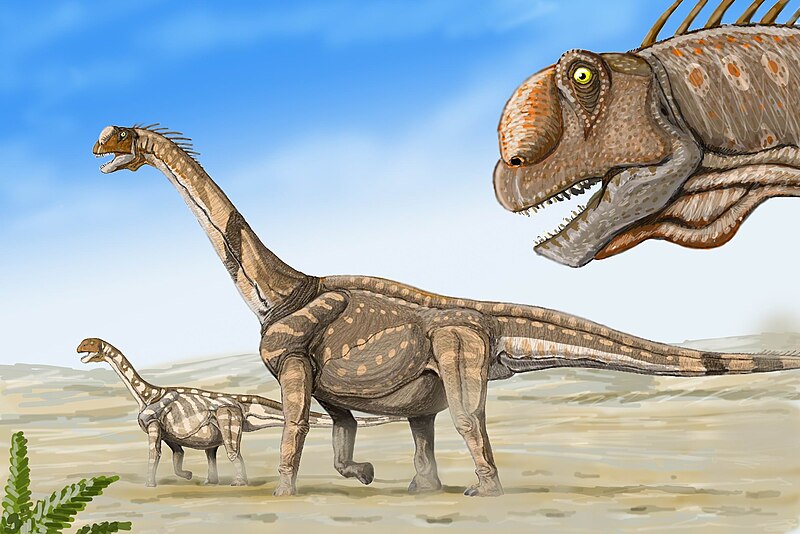
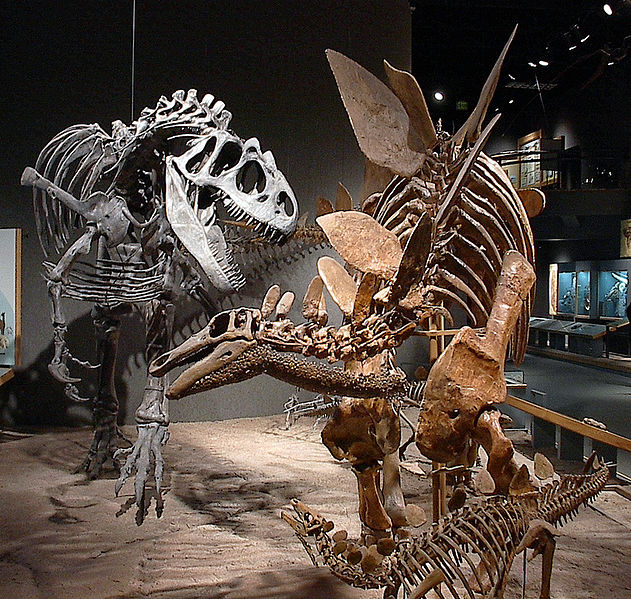

No comments:
Post a Comment